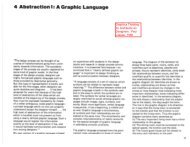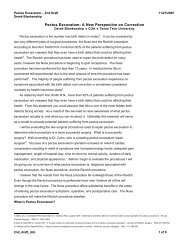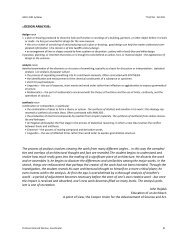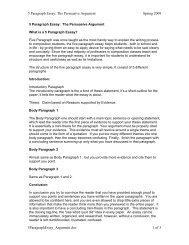The Eyes of the Skin
The Eyes of the Skin
The Eyes of the Skin
You also want an ePaper? Increase the reach of your titles
YUMPU automatically turns print PDFs into web optimized ePapers that Google loves.
ecreates a mystical and mythological sense <strong>of</strong> community; darkness createsa sense <strong>of</strong> solidarity and streng<strong>the</strong>ns <strong>the</strong> power <strong>of</strong> <strong>the</strong> spoken word.In emotional states, sense stimuli seem to shift from <strong>the</strong> more refinedsenses towards <strong>the</strong> more archaic, from vision down to hearing, touch andsmell, and £i-omlight to shadow. A culture that seeks to control its citizensis likely to promote <strong>the</strong> opposite direction <strong>of</strong> interaction, away from intimateindividuality and identification towards a public and distant detachment.A society <strong>of</strong> surveillance is necessarily a society <strong>of</strong> <strong>the</strong> voyeuristicand sadistic eye. An efficient method <strong>of</strong> mental torture is <strong>the</strong> use <strong>of</strong> a constantlyhigh level <strong>of</strong> illumination that leaves no space for mental withdrawalor privacy; even <strong>the</strong> dark interiority <strong>of</strong> self is exposed and violated.Acoustic Intimacy13ARCHITECTURES OF HEARING AND SMELLIn historical towns and spaces, acousticexperiences reinforce and enrich visualexperiences.<strong>The</strong> early Cistercian Abbey <strong>of</strong> Le Thoronet,first established at Florielle in 1136, transferredto its present site in 1176.Photo David Heald.14In rich and invigorating experiences <strong>of</strong>places, all sensory realms interact and fuseinto <strong>the</strong> memorableimage <strong>of</strong> <strong>the</strong> place.A space <strong>of</strong> smell: <strong>the</strong> spice market inHarrar, Ethiopia.Photo Juhani Pallasmaa.Sight isolates, whereas sound incorporates; vision is directional, whereassound is omni-directional. <strong>The</strong> sense <strong>of</strong> sight implies exteriority, butsound creates an experience <strong>of</strong> interiority. I regard an object, but soundapproachesme; <strong>the</strong> eye reaches, but <strong>the</strong> ear receives. Buildings do notreact to our gaze, but <strong>the</strong>y do return our sounds back to our cars. '<strong>The</strong>centringaction <strong>of</strong> sound affects man's sense <strong>of</strong> cosmos,' writes '!\Taltel'Gng. 'For oral cultures, <strong>the</strong> cosmos is an ongoing event with man at itscentre. Man is <strong>the</strong> umbilicus mundi, <strong>the</strong> navel <strong>of</strong> <strong>the</strong> world.' 103 It is thoughtprovokingthat <strong>the</strong> mental loss <strong>of</strong> <strong>the</strong> sense <strong>of</strong> centre in <strong>the</strong> contemporaryworld could be attributed, at least in part, to <strong>the</strong> disappearance <strong>of</strong> <strong>the</strong>integrity <strong>of</strong> <strong>the</strong> audible world.Hearing structures and articulates <strong>the</strong> experience and understandingspace. We are not normally aware <strong>of</strong> <strong>the</strong> significance <strong>of</strong> hearing in spatialexperience, although sound <strong>of</strong>ten provides <strong>the</strong> temporal continuum inwhich visual impressions arc embedded. "\<strong>The</strong>n <strong>the</strong> soundtrack isremoved from a film, for instance, <strong>the</strong> scene loses its plasticity and sense<strong>of</strong> continuity and life. Silent film, indeed, had to compensate<strong>of</strong> sound by a demonstrativemanner <strong>of</strong> overacting.<strong>of</strong>for <strong>the</strong> lack48THE EYES OFTHE SKINPART 2 49~
















